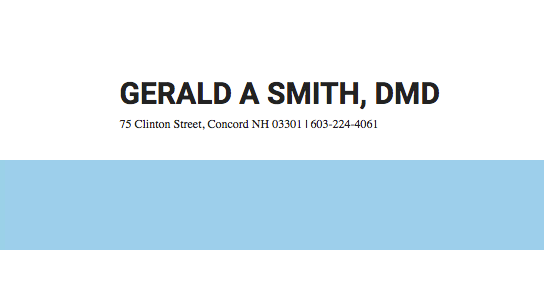
Dr. McGlennen: Tell me how you use OralDNA® salivary diagnostics.
Adrian Fitts RDH & Dr. Gerald Smith: When we see a patient that isn’t “normal.” Many patients are routine with regard to their oral hygiene/plaque/calculus. The vast majority of patients respond to usual measures, debridement, and diligent oral hygiene. However, some patients don’t fit this. For example, we see a relatively “clean” mouth but we are finding increasing pocketing/bleeding. The OralDNA® tests are perfect for determining just what is “going on” in these cases.
Dr. McGlennen: What are the top things to consider when you select a patient for testing?
Adrian Fitts RDH & Dr. Gerald Smith: After conducting a comprehensive periodontal examination along with radiographs, going back histologically then compare to the present day examination, if there’s a significant difference that’s when our office will use MyPerioPath®.
Dr. McGlennen: What are the biggest benefits to using salivary diagnostics?
Adrian Fitts RDH & Dr. Gerald Smith: The biggest benefits to using salivary diagnostics is that we are able to tap into the patients’ own bacterial DNA, by getting a report that shows the exact pathogens we’re dealing with and suggestive adjunctive treatment measures; rinses, antibiotics, etc. It is great to know what we are dealing with and at what levels.
Dr. McGlennen: What is your favorite part of the MyPerioPath® results?
Adrian Fitts RDH & Dr. Gerald Smith: We get to know the pathogens we are dealing with, what levels they are at and suggestions on management beyond the routine.
Dr. McGlennen: How has the MyPerioPath® results impacted your patient care?
Adrian Fitts RDH & Dr. Gerald Smith: The MyPerioPath® results have impacted patient care by allowing the patients to see their bacteria and the quantity of each bacteria present. For some patients, they are seeing this for the very first time. Then we are able to say “We caught the bacteria red handed, and now this is how we are going to solve your periodontal infection.”
Dr. McGlennen: How do your patient’s respond to this technology?
Adrian Fitts RDH & Dr. Gerald Smith: Generally, they are very impressed that this technology exists and that our office is on the forefront of the science, and of patient care.
Dr. McGlennen: What is your biggest challenge?
Adrian Fitts RDH & Dr. Gerald Smith: Dental patients are not accustomed to ancillary tests/charges as they are in medicine. We have also had questions of security/privacy as we “have their DNA.”
Dr. McGlennen: Can you provide some tips for conversation to our readers on how to overcome the cost obstacle?
Adrian Fitts RDH & Dr. Gerald Smith: Always present with facts to the patient and let the patient decide. The best conversation starter is to have the visual cue. I place the test box where the patient can see it. In my operatory, that happens to be at the foot of the dental chair. The patient is looking right at the box. Don’t start with the cost; instead, explain the benefits to the patient. Make the patient feel the value and that they are valued. When asked the cost, provide it, explain coverage is limited but we can help them explore medical/dental insurance codes. I mention we can also provide a medical claim form or letter of medical necessity to see if their medical insurance can cover the test.
Dr. McGlennen: If a new OralDNA® provider were to ask you for advice, what would be your best tip?
Adrian Fitts RDH & Dr. Gerald Smith: Don’t hesitate, start testing today! Put a stop to cookie-cutter treatments of JUST scaling and root planning. Personalize your patients’ care and guide them towards better health… Your patients will appreciate your care. There is no downside for the practitioner.
For more information on how to become an OralDNA Provider – scan HERE: 
- Interview with Adrian Fitts RDH & Gerald Smith DMD - September 28, 2018
